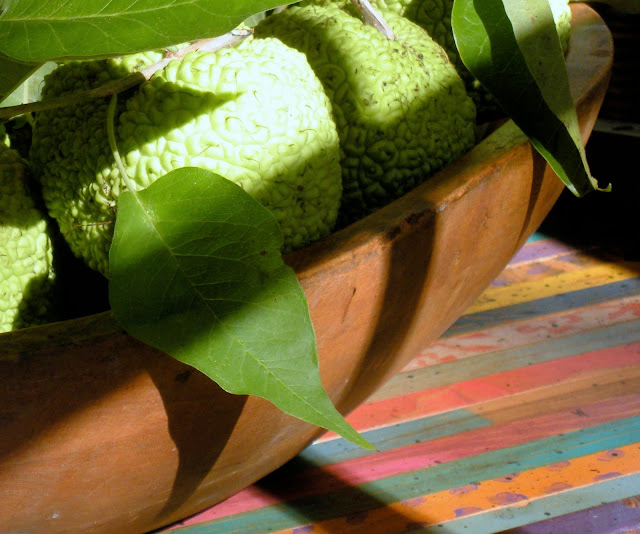O is for
Osage-Orange

Fruit of the Osage-Orange
The Osage-Orange or Bois D' Arc tree
is native to the Red River drainage areas
of Texas, Oklahoma, and Arkansas.

Osage-Orange or Bois D'Arc Tree with Fallen Fruit Below on the Right
It is also widely grown in many parts of the US.
These trees were often planted to create
a hedge row or wind break.
The Native Americans of the Osage Nation
used the strong, but flexible wood of the
Osage-Orange to craft bows for hunting.

More Horse Apples Ready to Fall
The Osage-Orange produces the most interesting
lime green spherical fruit in the fall.
They are often called horse apples,
though horses don't eat these.
They are basically an inedible fruit.
Fruit From the Osage-Orange
Once the grapefruit size balls of green ripen,
they fall to the ground.
The fruit of this tree is filled with a sticky sap,
so they feel a bit sticky to the touch.

Close Up View of a Horse Apple
Unlike a smooth grapefruit, the horse apples are bumpy.
They are covered with clusters of rounded bumps
like clusters of kernels of corn on a cob.
In 2011 while visiting
Parc De Proce in Nantes, France,
I saw hedge apples scattered about the ground.
Much to my surprise I looked up to see the
park had Osage-Orange trees labeled
as coming from America.
A young child found them to
be the perfect ball to kick about.































.jpg)









.png)


















.jpg)












































































.jpg)






